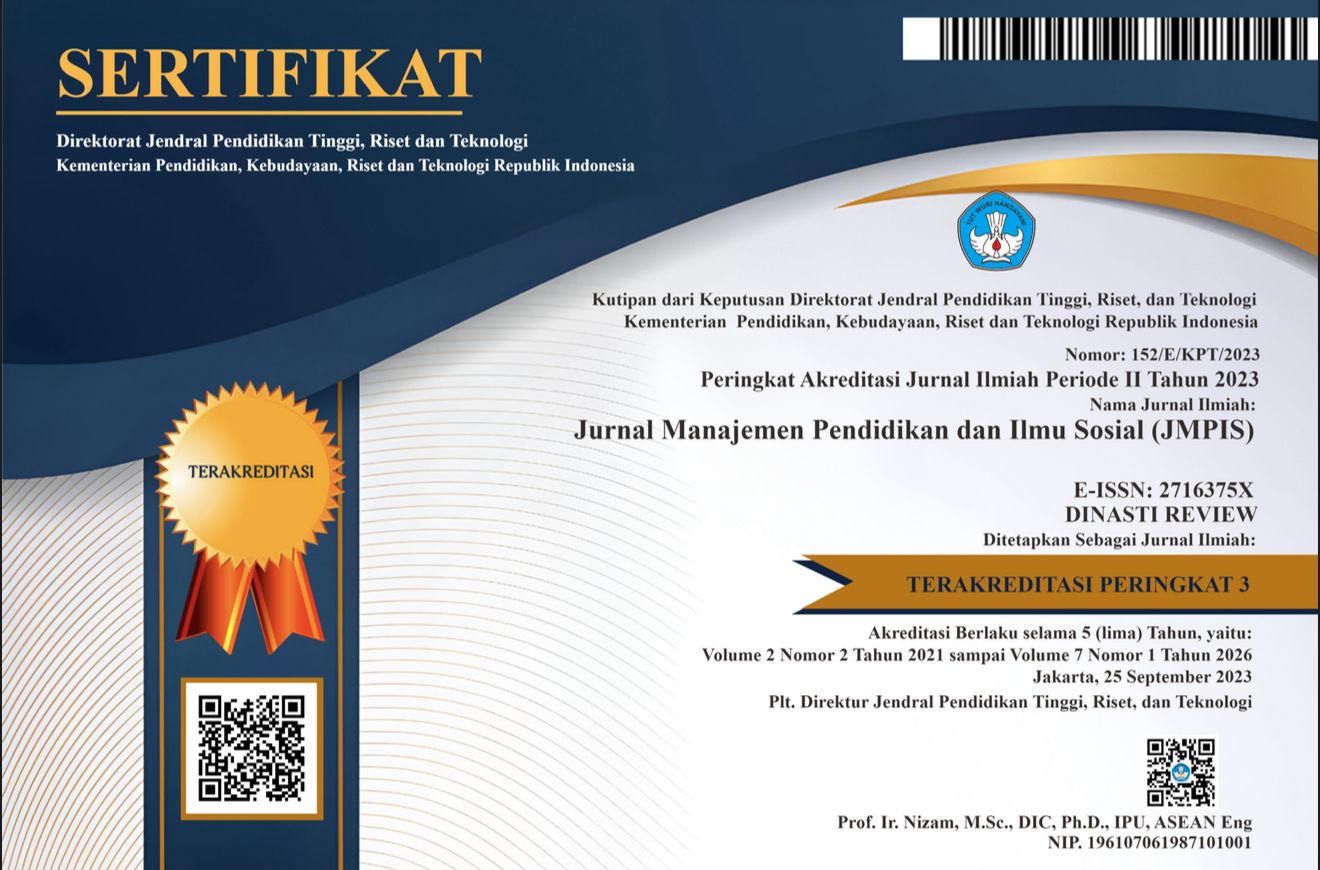Analisis Struktur Modal dalam Mengembangkan Usaha Dagang Surya Kota Gunungsitoli
DOI:
https://doi.org/10.38035/jmpis.v5i4.2216Keywords:
Capital Structure; Development; IncomeAbstract
The success of a business is determined by a healthy capital structure that can support business operational activities. However, in the current era of modernization there are many businesses that are unable to develop their businesses and ultimately experience a decline in profits or income. This was experienced by the Surya Trading Business in Gunungsitoli City. Increased business competition makes it difficult for entrepreneurs to increase people's purchasing power, apart from that the lack of adequate infrastructure and complicated services also results in decreased public interest. Based on these problems, research was carried out which aimed to find out how the Solar Trading Business in Gunungsitoli City was developed through capital structure analysis. This research uses qualitative research methods with a descriptive approach. From the research results it is known that the difficulty of UD. Surya is growing because the level of capital owned by the business is not as large as the capital of other businesses that have just been established and operate in the same field. The lack of capital levels results in limited provision of resources, infrastructure, and minimal funding to expand business locations. The conclusion of this research is that the decline in profits or business income is because the business cannot develop due to the lack of capital sources owned by UD. Sun. So it is recommended to increase capital sources by utilizing assets, making external loans, business collaborations, and utilizing information technology.
References
Anggraini, N., Kuntari, W., Rostwentivaivi, V., Suryana, A. T., Rahmi, P. P., Rahmasari, L. F., Sukmaya, S. G., Manalu, D. S. T., Sari, N. M. W., & Sari, P. N. (2022). Pengantar Ekonomi Mikro (Teori dan Praktis). Penerbit Widina.
Bayu, L. T., & Fahmi, I. (2023). Pengaruh tingkat perputaran modal kerja, struktur modal, dan ukuran perusahaan terhadap profitabilitas pada perusahaan barang konsumsi yang terdapat di bursa efek indonesia. Jurnal Ilmiah Mahasiswa Ekonomi Manajemen, 8(2), 479–504.
Brigham, E. F., & Houston, J. F. (2015). Fundamentals of Financial Management, concise 8th edition. Mason, OH: South-Western, Cengage Learning.
Equatora, M. A., & Awi, L. M. (2021). Teknik pengumpulan data klien. Bitread Publishing.
Fadilla, A. R., & Wulandari, P. A. (2023). Literature review analisis data kualitatif: tahap pengumpulan data. Mitita Jurnal Penelitian, 1(3), 34–46.
Hansen, S. (2020). Investigasi teknik wawancara dalam penelitian kualitatif manajemen konstruksi. Jurnal Teknik Sipil, 27(3), 283.
Irawati, R. (2018). Pengaruh pelatihan dan pembinaan terhadap pengembangan usaha kecil. Jurnal Ilmiah Bisnis Dan Ekonomi Asia, 12(1), 74–84.
Jusrizal & Aloysius, H. (2017). Faktor-Faktor yang Mempengaruhi Struktur Modal. Profita, 10(3), 373–387.
Komara, A., Hartoyo, S., & Andati, T. (2016). Analisis pengaruh struktur modal terhadap kinerja keuangan perusahaan. Jurnal keuangan dan perbankan, 20(1), 10–21.
Kristianti, I. P. (2018). Analisis pengaruh struktur modal terhadap kinerja keuangan perusahaan. Akuntansi Dewantara, 2(1), 56–68.
Mandasari, R., & Mukaram, M. (2018). Analisis Pengaruh Struktur Modal Terhadap Kinerja Keuangan (Studi Pada Perusahaan Properti dan Real estate yang Terdaftar di Bursa Efek Indonesia periode 2012-2016). Prosiding Industrial Research Workshop and National Seminar, 9, 584–593.
Prabowo, R. Y., Rahmatika, D. N., & Mubarok, A. (2019). Pengaruh Struktur Aset, Profitabilitas, Kebijakan Dividen, Pertumbuhan Perusahaan dan Ukuran Perusahaan Terhadap Kebijakan Hutang pada Perusahaan Perbankan yang Listing di BEI Tahun 2015-2018. Permana: Jurnal Perpajakan, Manajemen, dan Akuntansi, 11(2), 100–118.
Radjamin, I. J. P., & Sudana, I. M. (2014). Penerapan pecking order theory dan kaitannya dengan pemilihan struktur modal perusahaan pada sektor manufaktur di negara Indonesia Dan Negara Australia. Jurnal Manajemen Dan Bisnis Indonesia, 1(3), 451–468.
Rani, R. (2019). Pengaruh kualitas produk dan strategi promosi terhadap keputusan membeli cactus flower di Jakarta Selatan. Jurnal Manajemen, 9(1), 52–67.
Setyosari, H. P. (2016). Metode penelitian pendidikan & pengembangan. Prenada Media.
Sugiono, S., Noerdjanah, N., & Wahyu, A. (2020). Uji validitas dan reliabilitas alat ukur SG posture evaluation. Jurnal Keterapian Fisik, 5(1), 55–61.
Sumarno, A. (2012). Hakikat pengembangan. Jakarta: PT Raja Grafindo Persada.
Wahidmurni, W. (2017). Pemaparan metode penelitian kualitatif.
Downloads
Published
How to Cite
Issue
Section
License
Copyright (c) 2024 Tiwi Elvis Zebua, Aferiaman Telaumbanua, Eliyunus Waruwu

This work is licensed under a Creative Commons Attribution 4.0 International License.
Hak cipta :
Penulis yang mempublikasikan manuskripnya di jurnal ini menyetujui ketentuan berikut:
- Hak cipta pada setiap artikel adalah milik penulis.
- Penulis mengakui bahwa Jurnal Manajemen Pendidikan dan Ilmu Sosial (JMPIS) berhak menjadi yang pertama menerbitkan dengan lisensi Creative Commons Attribution 4.0 International (Attribution 4.0 International CC BY 4.0) .
- Penulis dapat mengirimkan artikel secara terpisah, mengatur distribusi non-eksklusif manuskrip yang telah diterbitkan dalam jurnal ini ke versi lain (misalnya, dikirim ke repositori institusi penulis, publikasi ke dalam buku, dll.), dengan mengakui bahwa manuskrip telah diterbitkan pertama kali di Jurnal Manajemen Pendidikan dan Ilmu Sosial (JMPIS).











































































